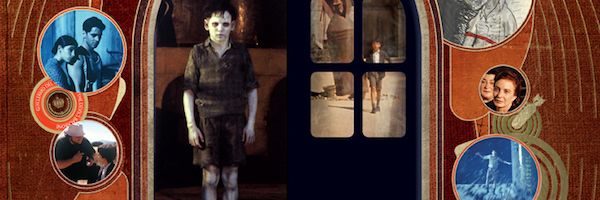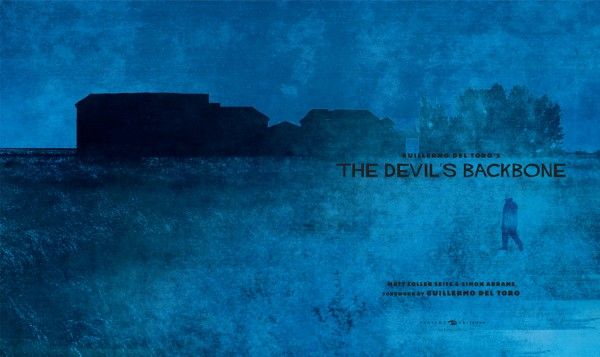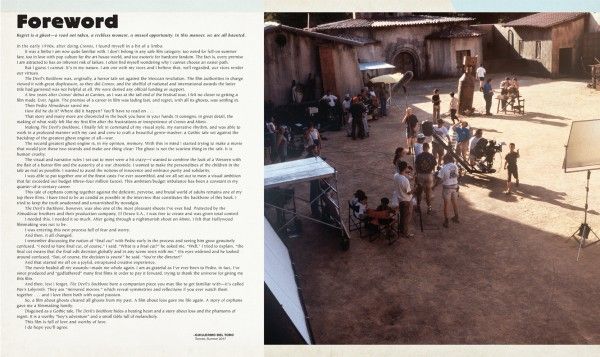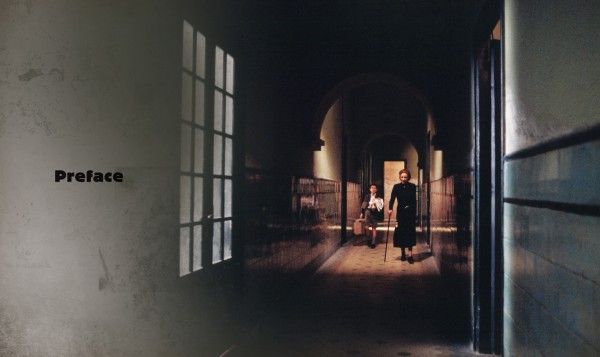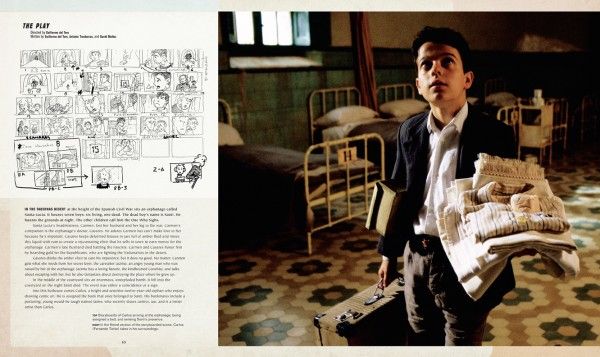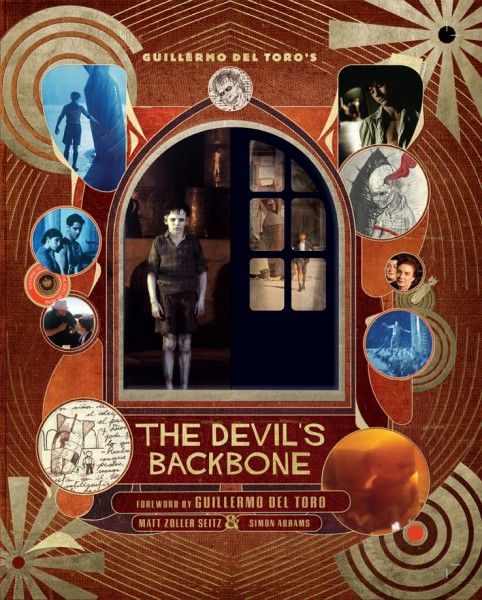On its surface, writer-director Guillermo del Toro's 2001 film The Devil's Backbone is a ghost story/mystery set in an orphanage against the backdrop of the Spanish Civil War in the late 1930s. Dig a little deeper and you'll find a tale rife with characters who are not quite whole--some physically, but all spiritually and emotionally--who are looking to fill that void by any means necessary, be it violence, sex, and money, or through love, friendship, and justice. These are but superficial analyses. Many layers below these lies the true heart of The Devil's Backbone, but like a bomb dropping through the atmosphere, you're unlikely to come close to the target without a little guidance.
So it's with endless praise that I inform you that Insight Editions' new book "Guillermo del Toro's The Devil's Backbone" is such a guide. Written by Matthew Zoller Seitz and Simon Abrams, and featuring a foreword and lengthy, insightful interviews from del Toro himself, this book--a collectors' item, really--offers a glimpse at the filmmaking, film history, and storytelling obsessions of the Oscar-nominated director. Though The Devil's Backbone may be the lesser-known of del Toro's spiritually cinematic siblings (the other being Pan's Labyrinth, for which he earned his Oscar nod), I defy you to flip through the pages of this book without finding new appreciation for the film, its filmmaker, and the sheer amount of sweat equity he's poured into it. It's impossible to know exactly what it's like inside del Toro's mind, but with this book, you can get scarily close.
Much like The Devil's Backbone itself, the Insight Editions' book is multilayered. If all you're looking for is a detailed account of the behind-the-scenes process from screenwriting, to casting, to the production of the film itself, you'll find that here in spades. If you're more interested in the artistic side of del Toro, his influences, and the things that inspired him to craft The Devil's Backbone in the way that he did, you'll discover insight in that regard as well. Surprisingly, this book also offers an incredibly candid account of one of the most personal, traumatic, and artistically formative events of del Toro's life: the kidnapping of his father. I was honestly surprised to see this story covered within these pages, but since the event occurred around the same time as the writing of The Devil's Backbone, it makes sense within the context of the discussion. And as del Toro himself said, "When you're in the middle of a kidnapping, there are two outcomes ... Fortunately, the good outcome is the one we got."
As for the production side of things, this book is a master class. It features Abrams' interviews with editor Luis de la Madrid, composer Javier Navarrete, cinematographer Guillermo Navarro, storyboard artist Carlos Giménez, producer Bertha Navarro, set decorator Pilar Revuelta, co-writer Antonio Trashorras, production supervisor Esther García and casting director Sara Bilbatua, along with cast members Fernando Tielve and Federico Luppi. Those retrospective interviews are also complemented by anecdotes, both personal and professional, from del Toro himself. And if those personal stories about the production cast and crew of The Devil's Backbone weren't insightful enough, this book also includes reprints of del Toro's own sketches, early storyboard art, character biographies, and concept art, some of which evolved over the course of the production and some that went on to be used in other films. Just from a visual perspective, this is an entrancing if a bit macabre coffee table book.
But if you want to dig further into what makes each of the characters tick, what sets each scene apart, and just exactly what the historical backdrop of both Spain in this time period and the backgrounds of the actors themselves have to do with the story, all of that information is accessible here as well. Be ready to Google a number of filmmaking terms and a Film Studies' syllabus worth of movie references because del Toro and Zoller Seitz drop them like it's common knowledge. And for these two, it is, but for folks who might just be looking for a casual peek into del Toro's process, there's a lot to learn, study, and internalize here. Because of that, "Guillermo del Toro's The Devil's Backbone" feels almost like an introductory textbook into the world of fantasy films and practical filmmaking. Del Toro painstakingly details the types of filters and number and angles of various lights used just to make certain scenes appear natural. He goes to great lengths to stress how "cinematography" is a catch-all term that incorporates every facet of a production from the texture and hue of a fabric, to the shade and shadow of special effects make-up, and the lighting decisions related to them. In the 160-odd pages of this book, del Toro drops a lot of knowledge about his decades in the industry and what he's learned, but it's only scratching the surface of what his process is really like.
And then there's the closing chapter that revisits the traumatic experience of the kidnapping of del Toro's father. Without going into much detail of the events themselves, del Toro does share some incredible (and darkly humorous) anecdotes from that time, a time when he happened to be dealing with the troubled production of Mimic while also attempting to write The Devil's Backbone script and a treatment for The Left Hand of Darkness, an adaptation of "The Count of Monte Cristo." That production will likely never come to see the light of day, but the source story about a man, wrongfully imprisoned, who escapes only to return later and exact his revenge has tremendous influence on The Devil's Backbone. Del Toro talks at length about the Alexandre Dumas tale, his own unproduced screenplay, and the events of the kidnapping itself, all coalescing in a strange sort of way to act as therapy, culminating in The Devil's Backbone.
Admittedly, that catharsis is still underway today, and the themes that resonate so strongly in del Toro's 2001 picture can still be felt throughout his more recent filmography. This Insight Editions' book is but one key that helps to unlock the secrets to Guillermo del Toro's darkly fantastic and wondrously magical movie-making, and I can't recommend it enough.
If my write-up on "Guillermo del Toro's The Devil's Backbone" does (or doesn't) have you sold, be sure to check out Insight Editions' other similar tomes here:

